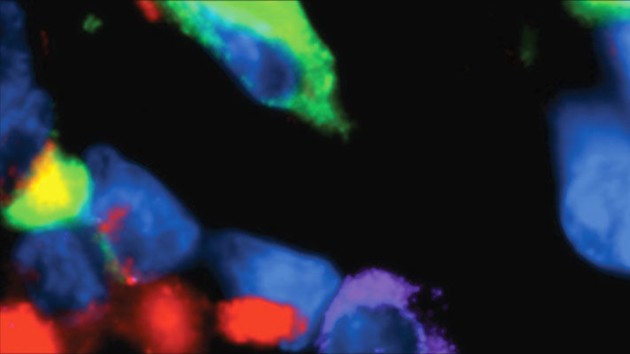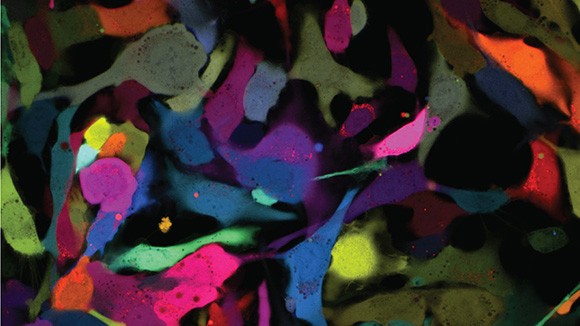Collections
Filters
-
Collection Type
-
-
Collection |
 Monthly Readers' Choice
Monthly Readers' Choice
This Collection highlights the newest top-viewed content from Laboratory Investigation. Updated each month, we hope you enjoy reading these articles. Laboratory Investigation aims to publish high-quality original research in all biomedical disciplines relating to the understanding of human disease and the application of new methods to the diagnosis of disease.
-
Collection |
 Focus on Brain Tumors
Focus on Brain Tumors
This collection, curated by Ho-Keung Ng of the Chinese University of Hong Kong, focuses on the underlying pathogenetic and molecular processes that contribute to brain tumors. Papers include a review on grading of adult diffuse gliomas according to the 2021 WHO Classification of Tumors of the Central Nervous System, a description of circulating tumor DNA profiling for childhood brain tumors, and a study on the plasticity of glioma stem cells in response to changes in the microenvironment.
Image: James Innes -
Collection |
 Laboratory Investigation Focus on China
Laboratory Investigation Focus on China
The editors of Laboratory Investigation are proud to present a Web Focus that showcases research by authors from institutions across China. We selected recent papers to highlight the significant contributions of Chinese scientists and to introduce the journal to an even wider audience. 《实验室研究》杂志:聚焦中国 《实验室研究》杂志编辑很荣幸地向读者呈现来自中国研究机构作者的网络热点研究。我们选取一系列近期发表的论文以彰显中国科学家所作的重要贡献,同时希望将本杂志推荐给更广泛的读者。
Image: Getty Images -
Collection |
Advances in Translational Pathology
Brightfield microscopy is the preferred method of pathologists for diagnosing solid tumors, utilizing common staining techniques such as hematoxylin and eosin staining and immunohistochemistry.
Image: Daniel R. Bauer -
-
Special |
Computational Pathology
Biology has evolved greatly in the past decade as high-throughput technologies were developed and applied to various biological disciplines. These technologies have generated an unprecedented amount and new types of biological data and how to make sense of “big data” is an emerging technological and conceptual challenge. Computational biology largely relies on computational and statistical algorithms to better understand biological processes. The editors of LI commissioned experts in the fields of computational biology and pathology to compile a special issue on computational pathology. We include original research, technical reports and review articles that use, modify, improve, develop, or summarize computational algorithms to solve biomedical questions.
Image: Mousumi Roy and Fusheng Wang -
Focus |
 Glycopathology
Glycopathology
The editors of Laboratory Investigation present a collection of recent papers that explore the relationships between changes in the mammalian glycome and pathobiology.
Image: Atsushi Kuno -
Supplement |
 United States & Canadian Academy of Pathology 109th Annual Meeting Abstracts: Eyes on You
United States & Canadian Academy of Pathology 109th Annual Meeting Abstracts: Eyes on You
The largest gathering of physician-pathologists in the world
Image: “Security Retina Scanner on Blue Human Eye” Geebshot/iStock -
Collection |
 TRP ion channels in the pathobiology of disease
TRP ion channels in the pathobiology of disease
The 2021 Nobel Prize in Physiology or Medicine was awarded to David Julius and Ardem Patapoutian “for their discoveries of receptors for temperature and touch”. In recognition of their work, the LI editors present an updated collection of papers that explore the mechanisms of transient receptor potential ion channels. Transient receptor potential (TRP) ion channels serve as cellular sensors that respond to a range of physical and chemical stimuli. Twenty-eight mammalian TRP ion channels have been reported, which belong to six subfamilies (TRPV, TRPM, TRPC, TRPA, TRPP, and TRPML). This collection of articles from Laboratory Investigation describes the roles of various TRP ion channels in inflammation, fibrosis and cancer.
Image: Koji ShibasakiOpen for submissions -
Focus |
Focus on non-alcoholic fatty liver disease
Non-alcoholic fatty liver disease (NAFLD) is the most prevalent chronic liver disease worldwide. The pathological spectrum of NAFLD ranges from simple steatosis to the necro-inflammatory and fibro-progressive form, non-alcoholic steatohepatitis (NASH), which may then progress to cirrhosis, liver failure and hepatocellular carcinoma. This web focus features papers from Laboratory Investigation and Modern Pathology that present new models and techniques, diagnostic advances, mechanistic insights and potential innovative therapies for NAFLD and NASH. Photo credit: Ming-Hong Tai
-
Collection |
Focus on the Eye
The editors of Laboratory Investigation and Modern Pathology present a variety of recent papers related to ocular pathology. These experimental and diagnostic studies cover congenital anomalies, corneal injury and repair, degenerative disease, and various malignancies.
Image: Peter Lwigale

 United States & Canadian Academy of Pathology 111th Annual Meeting Abstracts
United States & Canadian Academy of Pathology 111th Annual Meeting Abstracts
 United States & Canadian Academy of Pathology 110th Annual Meeting Abstracts: Never Stop Learning
United States & Canadian Academy of Pathology 110th Annual Meeting Abstracts: Never Stop Learning